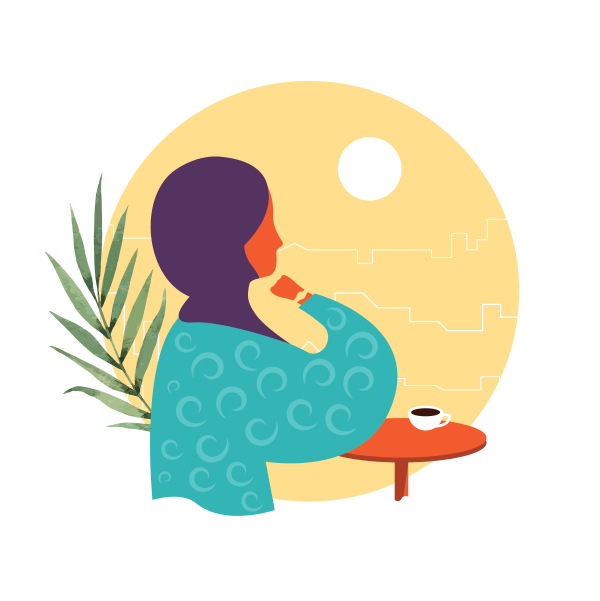Short-term thinking is a common problem in the philanthropic and social investment space. Donors and investors often get distracted by immediate gains, which are often easily measurable. But what this means is that we miss out on the big, bold transformative changes that do not happen overnight and that require norms and systemic change. Some of the most compelling changes are stimulated by investing in human rights, gender equality and climate justice from a long-term perspective.
One area where this is particularly apparent is funding towards women’s rights organizations. Research has shown the power of women's movements in ending violence against women and girls, and how empowering women mobilizes and accelerates changes across the Sustainable Development Goals (SDGs).
Yet, available long-term funding continues to be limited and project-based. Research by the Association of Women in International Development (AWID) shows that women’s rights organizations receive only 0.13% of the total Official Development Assistance (ODA) and 0.4% of all gender-related aid.
Through our project, The Key to Change: Women's Movements and the SDGs, we are collecting data on key achievements from women’s rights organizations from a decade-long perspective. We are building an evidence base and impact stories to show the power of investing in women's movement building. This project is ongoing and we will release a second wave of data in early 2022, so please reach out and participate if you are a women's rights organization or donor.
Follow the steps below to to start building your own evidence base for social justice action or get in touch with us to learn more:
- Step 1: Define Data Structures and Taxonomies, deciding how you want your data to be used and consumed. Social justice data could be structured and shared in multiple ways, including an online database, an API, excel, or a report. Defining a taxonomy is also important to ensure comparability with existing frameworks and relevant indicators for the sector. In the Key to Change project, ImpactMapper leveraged the Sustainable Development goals (SDGs) as well as a common grant taxonomy for foundations that fund women's rights co-developed through the Philanthropy Advancing Women's Human RIghts Network (PAWHR).
- Step 2: Develop Data Collection Protocols reflecting on the type of information you need to align with your research objectives. The Key to Change leveraged a mixed-method approach to collect and triangulate evidence from diverse women's rights movement building organizations and funders around long-term outcomes that emerge from bold rights-based movements.. In order to ensure diverse experiences are documented from around the world, a multilingual survey was created in the ImpactMapper software tool in Arabic, English, French, Russian, Portuguese and Spanish. To dive deeper into key wins and strategies that led to successes, we are engaging in in-depth interviews and developing case studies.
- Step 3: Qualitative Data Coding and Data Analysis. Creating an outcome dataset with data from diverse sources requires bringing an analytical lens to code stories, connect data points, and unearth trends. In the Key to Change project, we leveraged a deductive and an inductive approach for coding qualitative data. Through a deductive approach, data was coded from the lens of our predefined taxonomy and aligned with the SDG framework. Following an inductive approach, we have identified at least 7 outcome categories so far:
- Stronger laws and policies promoting gender equality and ending GBV,
- Strengthened coalitions and movement building for justice, gender equality and nonviolence,
- Improved economic power and opportunities for women, including minority women,
- Mobilized greater funding and support for feminist social change and movements
- Expanded access to quality healthcare, including reproductive and sexual health from a rights based approach
- Strengthened knowledge and feminist analysis in the public and policy space
- Mobilized greater funding and support for feminist social change and movements
These outcome categories emerged from stories of change shared by organisations, together with strategies that were working and key barriers to progress. This approach is particularly relevant for tracking long-term change, which is often complex and non-linear, and thus difficult to map according to predefined categories or indicators.
- Step 4: Creating a Publically Available Database and Report. Deciding how to host and share your data defines who has access to and in what ways. In the Key to change project, a public database was created on Airtable to make findings easily accessible and searchable for women's rights organizations, donors and stakeholders. This allows organizations taking part in the project to showcase their long-term achievements among a wider community of funding partners. Likewise the initial release of datawas shared through a visual report and case studies to reach diverse audiences.
- Step 5: Communicate and Share. Communication of evaluation or research findings is often dry and decontextualized. We leveraged compelling data visualizations, infographics, and case studies to help paint a more robust story of change. Strategic research dissemination to support learning and decision-making is also a common gap in the social sector. To that end, we are creating partnerships with other social justice organizations, donors, and journalists to reach a much wider audience.
We hope these steps are useful for your projects! If you want to partner with us on this project or hear how we can help your organization track and communicate your impact from a long-term perspective get in touch at: team@impactmapper.com or sign up for our newsletter to stay in touch: http://ow.ly/Xd5950E2r0H

